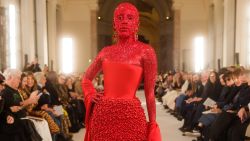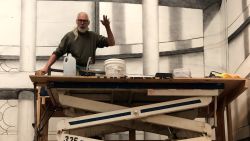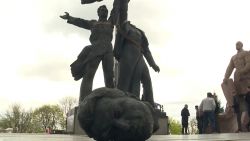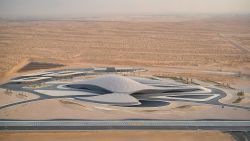Editor’s Note: Amanda Levete is a RIBA Stirling Prize-winning architect and founding principal of AL_A, an international award-winning design and architecture studio based in London. For her September 2017 CNN Style guest editorship, she explored the theme of thresholds – both real and imagined – as applied in architecture and far beyond.
Architecture embodies everything it is to be human. It is a rich field that touches on issues of national and individual identity, society, economics, politics and culture, and as architects we must strike a balance between these different subjects. In this sense, we often find ourselves negotiating at the threshold.
Most fundamentally, architecture is the enclosure of space, the distinction between what is inside and outside. The threshold is the moment at which that changes; the edge of what is building and what is something else.
And in terms of identity, thresholds define who we are as nations and as individuals. As an architect, I am always questioning what thresholds are and, through my work, imagining new definitions.
Thresholds in architecture can be extended or brief as they help us transition from one environment to another – from public to private, light to dark, enclosed to open, bustling to still. Thresholds can diffuse or blur that moment of transition, invoking a sense of deliberate ambiguity. Or they can be definite, either defiantly untraversable or designed to make people hyper-aware of change.
Amanda Levete's most memorable buildings
Throughout history, architectural thresholds – gateways, doors and windows – have been appropriated as classic metaphors for the creation of new beginnings, connectivity and transitions.
A visit to the 17th-century Katsura Imperial Villa in Kyoto is the chance to eavesdrop on the conversation between building and nature. The passage through the landscape is highly controlled and delicately choreographed, employing thresholds and tricks of perspective.
On one part of the journey, there is a change from one scene to another as you cross a bridge with an uneven surface. The uncertain footing forces you to look down, and when you are back on level ground, you look up and suddenly you are presented with an entirely different vista and have entered into a new world.
Further along the path, you think you see a rural idyll through a window, but again it is a conceit. The reality is that the threshold between you and the expansive landscape has been so cleverly manipulated that a miniature garden is made to appear like an infinite field.
The manipulation of the relationship between spaces is the story of relationships between citizen and state, between individuals, and between people and their environment. Through design, such thresholds send messages as to whether spaces should be viewed as public or private, reassuring or intriguing. They can be used to help people to find their place in the world both physically and metaphysically.
The passage through a building and across multiple thresholds starts to create narratives within architecture.
Most of the time, we cross thresholds unconsciously. Crossing the road and into the front door of our home is unremarkable, but the decision to cross the threshold and enter into an unfamiliar, institutional building is not always so instinctive.
My studio, AL_A, recently completed an extension at the Victoria and Albert Museum in London, and as part of this project – known as the Exhibition Road Quarter – we were tasked with creating an additional entrance to the museum. One of our main objectives was to create a counterpoint to the main Cromwell Road entrance, which is both grand and overawing; a threshold that can inspire but also dissuade.
We wanted to dissolve both the physical and more cerebral barriers that the original entrance seemed to impose. So, we deliberately blurred the threshold, transforming a once opaque wall into a more open screen to encourage people to drift into the V&A from the semi-pedestrianised Exhibition Road. Through this move we have reimagined the possibility of exchange between street and museum.
Opening up our institutions and encouraging people to appropriate them is a start in reminding people of the vital importance of culture in our fragmented society. We need to celebrate culture because this above all else has the ability to break down thresholds and transcend borders.
The 2017 news agenda is still being defined by two events from last year: the Brexit referendum and the election of Donald Trump as US President. They were both caused by and represent a worrying rise in divisions in society, and how thresholds between countries are hardening and attitudes are becoming more polarized.
In fact, the idea of a referendum revolves around an indissoluble threshold: yes or no. As we have seen with Brexit, the reality of the Remain/Leave decision is far removed from any such clarity.
There has never been a more important time in society to celebrate what unites us rather than divides us, and that can be through culture and, more simply, through the creation of public spaces where people can come together.
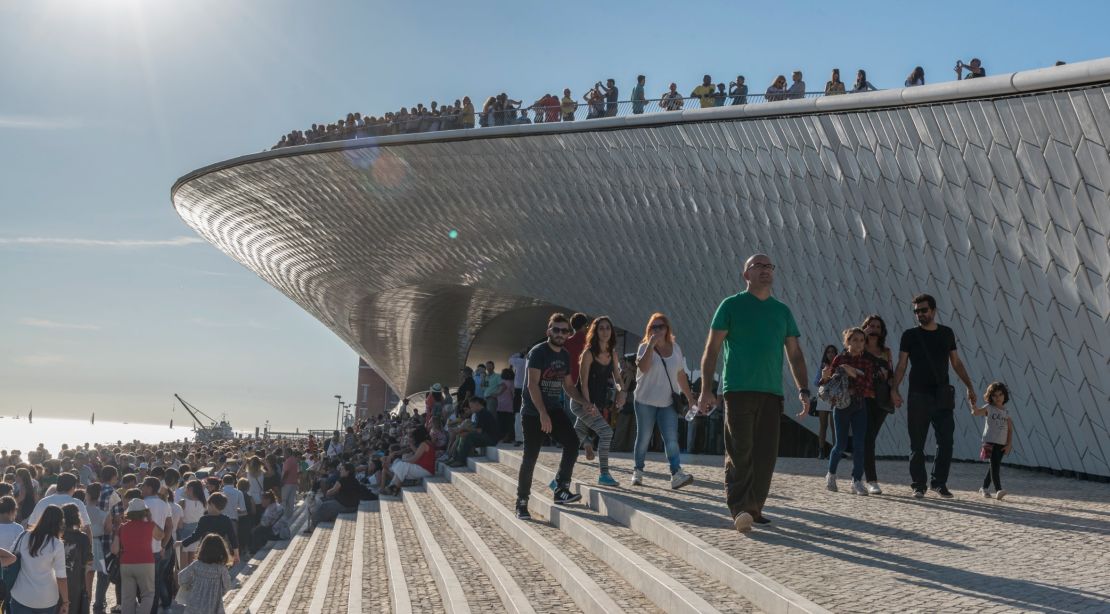
In Lisbon, we designed the roof of the Museum of Art, Architecture and Technology (MAAT), as a new public square in the city, as an outdoor room. It has become a social place of intersections and conversations across thresholds, one that people can pass through or just be in; a place visitors can use and program in the way they want. It gives them a new perspective as they look back towards the old city or out towards the Tagus on the threshold between the city and the river.
On its opening day last October, more than 80,000 people – over 14% of the population of the municipality of Lisbon – visited MAAT. This is a testament to the attractive power of such new public spaces, their place in the consciousness of the city, and the need for spaces that help us overcome the thresholds that could otherwise divide us.
The most vibrant cities, like Lisbon or London, are those that create countless opportunities to connect across thresholds, connecting people of different nationalities and from different walks of life, with different ideas and different experiences. For when you connect people, relationships are formed and thresholds become more about mutual exchange. The role of our cities and our public buildings is, as E.M. Forster’s “Howards End” suggests, to “only connect.”


